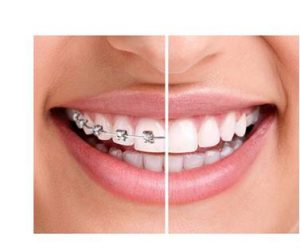Crooked and crowded teeth are hard to clean and maintain, therefore causing problems to the teeth (tooth decay) as well as the surrounding tissues, bone and gums (gingivitis, periodontitis). A malocclusion problem (bad bite) can lead to abnormal wear or fracture of the tooth surfaces, temporomandibular joint disorders, difficulty in chewing and speaking, trauma of the supporting gum tissue, etc.
The psychological impact of an unattractive smile cannot be overlooked. The absence of a beautiful, pleasant smile leads to low self-esteem.
Finally, when left untreated, many orthodontic problems become worse as time goes by. Orthodontic treatment, therefore, may prove less costly than the additional dental care required to treat the more severe dental problems that can develop in later years.

Getting treated by a specialized orthodontist is the key to getting the best orthodontic outcome. An orthodontist is a specialized dentist that has completed a 3-year post-graduate orthodontic specialty program. All orthodontists are dentists, but only a small percentage of dentists are orthodontists. Specialized orthodontists after demanding education acquire the knowledge and skills to manage tooth movement and guide facial development.

Most orthodontic problems are inherited. Examples of these genetic problems include crowding, spacing, protruding maxillary teeth, supernumerary or missing teeth and jaw growth problems.
Other orthodontic problems are acquired and develop over time. They can be caused by prolonged thumb or pacifier sucking, mouth breathing, abnormal swallowing, early or late loss of primary (baby) teeth, accidents, medical problems etc.
Sometimes a genetic orthodontic problem can be further complicated by an acquired epigenetic condition. No matter what the cause of an orthodontic problem is, the Orthodontist is the most capable person to treat it.

Every case is different; therefore the length of orthodontic treatment varies. Generally, treatment time varies between 6-30 months. Treatment length varies depending on the severity of the orthodontic problem, the desired treatment outcome and patient cooperation. Patients that maintain good oral hygiene, avoid hard and sticky food, follow the orthodontist’s instructions concerning the use of orthodontic appliances (rubber bands, headgear, retainer etc) and keep their monthly prescheduled appointments, finish treatment on-time achieving the best treatment results.

Orthodontic treatment cost varies depending on many factors, such as the severity and complexity of the orthodontic problem, the treatment time and the type of orthodontic appliances that will be used. On our first visit we will be happy to discuss treatment cost and payment plans with you.
In our practice we offer you the option to pay with credit, debit or prepaid cards.

Even though Orthodontic treatment can improve a smile at any age, for every person there is an ideal time for the initiation of treatment. Therefore, knowing that prevention is better than treatment in every aspect of Medicine and Dentistry, the first orthodontic check-up should be scheduled no later than age 6-7. Even though not all permanent teeth are present at that time, an Orthodontist can diagnose the existing or developing problems of the teeth, jaws or both. At that young age, orthodontic intervention might not be needed but an Orthodontist will be able to inform you about the most ideal time to initiate orthodontic treatment, in case it is needed.

Even if your child is older than age 7, it is important to get an orthodontic check-up as soon as possible. It is true that most orthodontic treatments initiate at age 10-12. Of course this is different for every individual patient. Generally speaking though, due to the fact that children and adolescents are still growing, orthodontic treatments that are initiated at that time achieve optimal esthetic and functional results.


